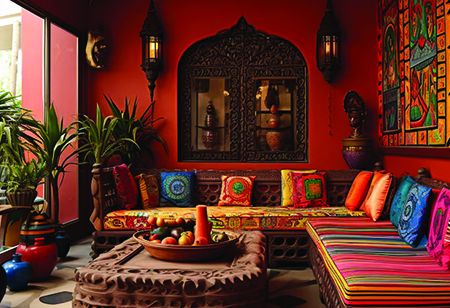
Interior design is regarded as the perfect marriage of art and science, which enhances the interior of a building to achieve a healthier and more aesthetically pleasing environment for the people living in the space. Modern interior design captivatedly blends cutting-edge technologies, with the skill and expertise of the efficient interior designers. A modern space not only characterized by alluring aesthetics, at the same time, it should be comfortable and delightful which carries a welcoming vibe for all its visitors.
Apart from art and science, it needs a proper business planning of a creative, technical, sustainable, and functional interior solutions that corresponds to the architecture of a space. And here comes the importance of having a professional who has a vast knowledge about the minor to major aspects of interior design. According to the report of Mordor Intelligence, the Interior Design Services market size is estimated at $137.93 billion in 2024 and is expected to reach $177.13 billion by 2029.
The fusion of technology with traditional aesthetics and modernism spurs the whole sector by enduring the timeless allure of tradition & embracing the transformative power of technology to create something breathtaking and uniquely awesome
 According to Amrita Phookun, Head of Design, Olive by Embassy, “In the hospitality industry, interior design has played a crucial role in crafting unforgettable guest experiences by reflecting the local culture and heritage. The travel and tourism industry serves as a microcosm of its surroundings, offering guests an immersive and authentic sense of place. For instance, a boutique hotel in Bali might incorporate traditional Balinese carvings, vibrant tropical plants, and local textiles, creating an ambience that mirrors the island's rich cultural tapestry. Similarly, a lodge in the Swiss Alps would evoke the region's rustic charm through the use of wooden beams, cozy textiles, and alpine-inspired decor.
According to Amrita Phookun, Head of Design, Olive by Embassy, “In the hospitality industry, interior design has played a crucial role in crafting unforgettable guest experiences by reflecting the local culture and heritage. The travel and tourism industry serves as a microcosm of its surroundings, offering guests an immersive and authentic sense of place. For instance, a boutique hotel in Bali might incorporate traditional Balinese carvings, vibrant tropical plants, and local textiles, creating an ambience that mirrors the island's rich cultural tapestry. Similarly, a lodge in the Swiss Alps would evoke the region's rustic charm through the use of wooden beams, cozy textiles, and alpine-inspired decor.
By thoughtfully integrating local elements into interior design, hotels and resorts enhance their aesthetic appeal. This sets the seal on fostering a deeper connection between guests and their destinations. Using indigenous materials and craftsmanship supports local communities and helps preserve cultural traditions, ensuring these unique practices continue to thrive. Furthermore, incorporating sustainable practices such as sourcing eco-friendly materials and implementing energy-efficient solutions minimizes the environmental impact, promoting a healthier planet. This approach to design transforms each stay into a journey, offering guests a meaningful encounter with the essence of the location while championing sustainability.
As we celebrate World Interiors Day, it is important to recognize the diverse ways in which cultural and regional influences can elevate our designs. Each element, from the color palette to the choice of materials, contributes to a cohesive narrative that celebrates the local heritage transforming every stay into a deeply enriching journey that connects guests with the heart and soul of their destination”.
Copyright © 2024 HomesIndiaMagazine. All Rights Reserved.